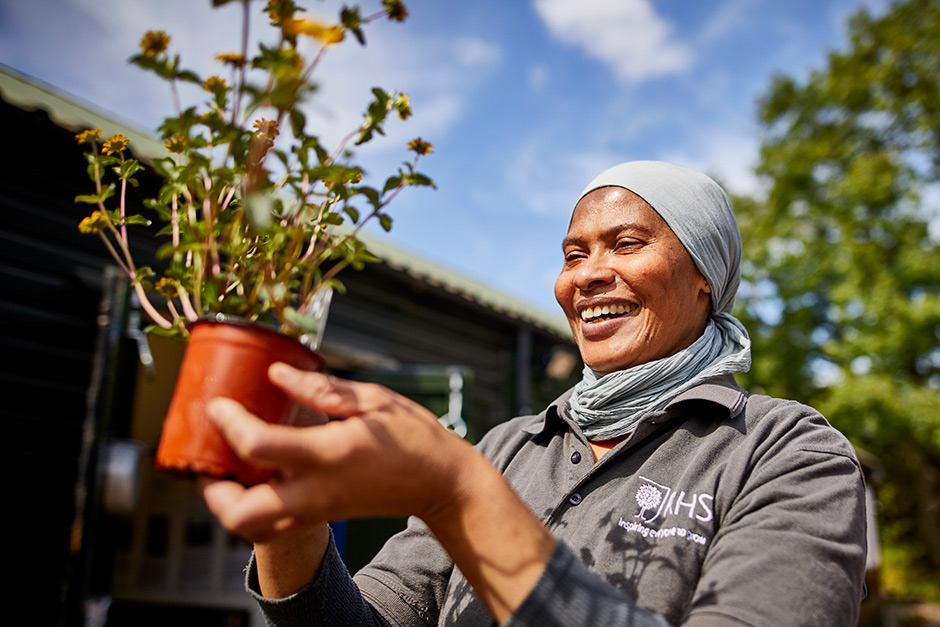Bringing joy from tragedy
Horatio Chapple had the idea for a garden specifically for spinal injury patients. After his death, his family created an attractive and practical garden that also stands as a lasting memorial to an inspired young man

‘Horatio spent much of his time chatting to the patients, who are among the few that are likely to spend months rather than days in hospital, because of the nature of spinal injuries,’ says his mother, Olivia. Noticing that their only access to the outside space was a smoking area in the corner of a car park, Horatio came up with the idea of creating a garden.
‘I thought it was a fantastic idea,’ says Olivia, ‘and I said “if you want it to happen then quantify it, do your research”. So he did: he identified an area of rough grass next to the spinal unit, then started talking to the patients and the staff about what they would want from a garden. He even drew some sketches.’
In August of that second summer, 2011, Horatio joined an expedition to Svalbard in Norway. One morning the camp was attacked by a polar bear, and Horatio was killed. From the horror and shock of this terrible moment there quickly arose a determination among his family and friends to create the garden he had thought so much about.
A place to escape
Horatio’s own research was essential in setting the direction for the garden. ‘He had found that most of the patients were resistant to the idea of a “therapy” garden,’ says Olivia. ‘They were struggling with life-changing injuries, and being constantly challenged to overcome them. Patients didn’t want more challenge when they came out here – they had enough of that indoors. The two words that came up again and again “accessible” and “beautiful”. They just wanted to escape.’But in fact the accessibility came before the beauty. One of Cleve’s first moves was to ask to be pushed around on a hospital bed, just as many of the patients would be experiencing the garden. ‘It’s a completely different way of experiencing the outdoors,’ he says, ‘you feel vulnerable and quite out of control, and you feel every tiny bump.’
A smooth surface and wide paths were essential to the garden, and the smoothness had to be extreme, limiting the landscaping materials that could be used. The whole area was levelled completely, the paths were built from resin-bound aggregate, and there are no thresholds on any of the entrances.
Olivia says, ‘For patients just starting to learn to use wheelchairs after spinal injuries, any bump more than a centimetre and we may as well build a brick wall.’ The path is wide and swoops around the garden, opening up into a larger area for events, narrowing under an enclosed walkway with a trickling rill, and leading to quiet nooks to sit alone or with visitors.
As well as serving patients, this garden is for visitors, too, who may well spend hours and days at the hospital. Olivia says: ‘I was talking to a patient, a young man aged 21, and he said his friends feel awkward about visiting and sitting by his hospital bed, but if it is a nice day they will come because they know they can all go out into the garden. It’s easier.’
Aruncus ‘Horatio’, which bears plumes of creamy white flowers in midsummer, has become an important plant both visually and symbolically, and is used throughout the garden. Acanthus mollis ‘Rue Ledan’ with its bold black and white spires is found repeatedly, as are delicate, white, floating flowers of Libertia.
This ever-changing display, plus
 ‘Everyone loves the garden, and can see how much it means to the patients,’ says Olivia. ‘There is something transformative that happens when patients come out here, a physiological change – you see it sometimes. They can be really emotional. It is completely different to inside the hospital.’
‘Everyone loves the garden, and can see how much it means to the patients,’ says Olivia. ‘There is something transformative that happens when patients come out here, a physiological change – you see it sometimes. They can be really emotional. It is completely different to inside the hospital.’For her, the garden – and the sister projects it has spawned at spinal units at Stoke Mandeville in Buckinghamshire, Oswestry in Shropshire and in Glasgow – have been a focus for her own energies, and for her love for Horatio. ‘This has such an amazing impact every day, and I am doing it all on Horatio’s behalf. I know that he would have done this.’
Discover more about Horatio's Garden
*This article was first published in the July 2017 issue of The Garden magazine


